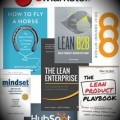Have you ever presented (pitched) your disruptive business idea – one that had yet to be seen in the market – to a venture capitalist, a CFO or a gating committee? If so, you know you need to come prepared with a solid business plan (deck).
The one part of your plan your investor will be the most concerned with is the financial forecast. Detailing costs is usually not a problem. The part however that requires you to put your creative hat on is the revenue forecast.
 When presenting this forecast, you can most likely do so with a straight face with the numbers for the first few months. You know very well, however, that any number past this time horizon is based on wishful thinking rather than any market facts. Market facts would require some kind of market history. The problem is that a disruptive innovation is, by definition, not found in the market. Hence, keeping a straight face in front of an investor requires serious acting talent on your part. Fearing that at any time you will be called out.
When presenting this forecast, you can most likely do so with a straight face with the numbers for the first few months. You know very well, however, that any number past this time horizon is based on wishful thinking rather than any market facts. Market facts would require some kind of market history. The problem is that a disruptive innovation is, by definition, not found in the market. Hence, keeping a straight face in front of an investor requires serious acting talent on your part. Fearing that at any time you will be called out.
You can rest assured you won’t be called out. Why? Because your investor, if he or she has any experience at all with financing disruptive innovations, knows that the revenue numbers on your forecast in year 2 are probably less likely to be exact than the chance they have to win the jackpot with that lottery ticket they have in their wallet.
So why are investors and entrepreneurs still relying (or pretending to) on these financial forecasts to decide whether or not to invest in innovation projects? That is the question Eric Ries, author of The Lean Startup, asked himself.
As a serial entrepreneur he knew very well that forecasting sales revenue on an innovation project, never mind a disruptive one, with any accuracy was impossible until you achieved product/market fit (time when you have found the correct business model to generate consistent growth in your sales).

He also understood that investors needed to be reassured that the money they poured in the project, before product/market fit occurred, was used to achieve it and not dilapidated.
Those of you who are not yet familiar with the Lean Startup methodology, it requires the owner of an innovative project to do a series of market experiments in order to validate the underlying assumptions of his or her business model until the model that generates the maximum long term revenue is found.
These experiments, when done rigorously, generate reliable metrics. These metrics are measured against a standard to validate (or invalidate) the assumptions.
A multitude of experiments, done in rapid iterations, are required to test the large number of assumptions on which are based any start-up or project. When an experiment shows that an underlying assumption is not proven, this part of the business model must be changed. Experiments are conducted until the optimal business model is found and then continue during the entire life of the project to constantly adapt the model to market changes.
What is Innovation Accounting?
 Innovation accounting is defining, measuring and communicating the process of innovating either in the context of a start-up or a project in an established organisation.
Innovation accounting is defining, measuring and communicating the process of innovating either in the context of a start-up or a project in an established organisation.
Innovation accounting uses the data generated by the experiments to determine, at a point in time, the maximum value of a start-up or project. The experiments data feed an econometric model similar to the ones used to calculate the value of stock derivatives in the financial sector. The maximum value of the start-up or project at a given time can be used by investors (venture capitalist or CFOs) to gauge how much they will invest given the returns they are targeting.
Now that we understand the why and what of innovation accounting, in the second part of this post, we will dive into how innovation accounting is done.










